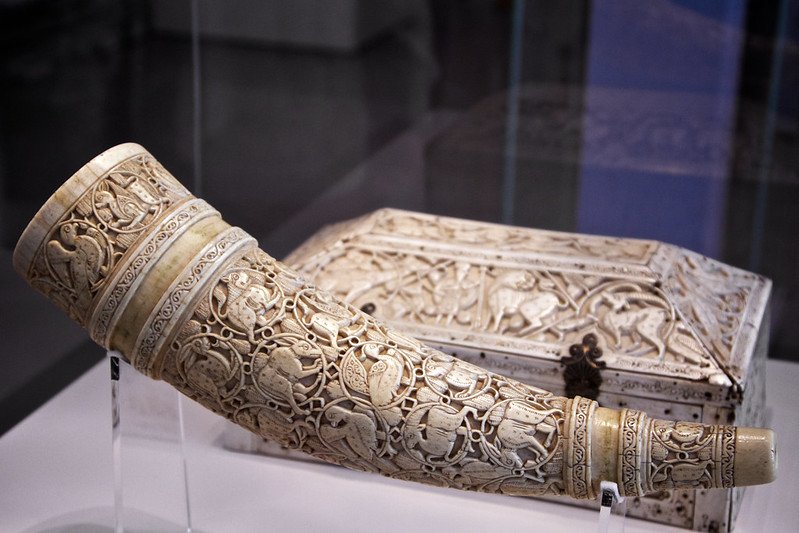Read in : தமிழ்
18 years after elephant poacher Veerappan was killed in an encounter with the Karnataka STF, the poaching of elephants and illegal tusk trade continues unabated by Tamil Nadu-based poachers. In many instances, these smugglers are now being caught in Karnataka and Kerala.
In the last 45 days alone, the Karnataka police and forest department squads have caught five cases of tusk smuggling in Chamarajanagar, Puttur, Mangaluru, Mysuru and Kodagu. Though the tusk haul was small compared to the volumes dealt with by Veerappan, forest officials in Tamilnadu and their counterparts in Karnataka and Kerala fear there could be extensive poaching activities going on in the dense forests on the tri-junction of the three states.
Local conservationists point out that the forests of Biligiri Ranga Betta, Male Mahadeshwara Hills, and Bandipur forests were showing signs of Veerappan-like wildlife crime activities. Bidralli Kencha, a former aide of the forest brigand, who was lying low, and his accomplice Sudhagaran are still at large operating in these forests, the activists said.
Poachers have been detained frequently by CID (forests) officials, police, and forest guards. The largest group was apprehended in November 2021 with 20 kg of tusks. Since then, police and forest officials have been on the lookout for many others who were poaching wildlife for banned meat.
In the last 45 days alone, the Karnataka police and forest department squads have caught five cases of tusk smuggling in Chamarajanagar, Puttur, Mangaluru, Mysuru and Kodagu
A senior forest official at Male Mahadeshwara Hills, Mr Yedakondala told Inmathi that, “Frequent cooperative operations between the police and forest officials were undertaken to remove poachers from the erstwhile Veerappan region. Although there has always been meat poaching in these areas, occasionally we do manage to apprehend poachers carrying animal pelts.”
Stating that the fight against poaching was never-ending, Mr Yedakondala, however, said it was no longer easy for the criminals to operate inside the forest area. “Our watchers, villagers, and informers are everywhere; they can identify poaching activities and report to us. Gone are the days when forest brigands used to carry powerful rifles killing elephants and tigers for their wildlife trade,” the official said.
Also Read:
How saving a bird will sustain lucrative sandalwood trees
Pandemic impact? Amateur burglars in Kovai leave evidence trail

Tusk smugglers from Tamil Nadu caught in Puttur in Karnataka
Globally, India was late in banning the trade in ivory but one of the earliest to prohibit the use of ivory for making artefacts as early as the 1990s. Notwithstanding the ban, the WTO cell on the contraband wildlife trade estimates that a kilogramme of uncarved ivory might range between Rs 15,000 and Rs 50,000 on the Indian underground market, while “intricately carved and modelled pieces” can fetch hundreds of crores. Japan used to be one of the largest importers of Indian elephant tusks till 2017, but after the total ban, it has totally shunned Indian ivory products as well as raw ivory. But that has not stopped the sale of ivory artefacts in cities like Bengaluru and Mumbai; the fashionable uptown areas like MG Road in Bengaluru and Colaba in Mumbai still are frequented by the ivory artefacts hunters.
The question of why poachers and wildlife traders from Tamil Nadu come to Karnataka via Kerala had perplexed forest officials in both Karnataka and Tamil Nadu ever since Veerappan surfaced. The answer lies in the smuggling routes. Most of the demand for wildlife products, particularly tusks is concentrated now in the South-East Asian countries where ivory artisans and carving technology is available for the finished ivory market. Hence customs officials in all ports in these South-East Asian countries have strict vigil over the vessels that depart from the eastern Indian ports mainly Tuticorin and Chennai. However, vessels departing from western Indian ports do not attract much scrutiny and are able to dock and depart easily. It is significant that not even one case of tusk smuggling has been booked in ports on the west coast.
Most of the demand for wildlife products, particularly tusks is concentrated now in the South-East Asian countries where ivory artisans and carving technology is available for the finished ivory market
Conservationists from Dimbam and Satyamangalam say that earlier the tusk trade was centred around Bengaluru. But after 2019, several raids and combined anti-smuggling operations by the forest squads and police, the contraband tusk market has shifted overseas. The smugglers now take circuitous routes from the point of extraction, mainly Tamil Nadu, to Karnataka’s port cities like Mangaluru, Karwar and Malpe, and smaller ports like Tadadi. Tamil Nadu forest officials are now sharing information with their counterparts in Karnataka and Kerala, leading to the higher number of arrests in Karnataka and Kerala, a senior forest official claimed while speaking to Inmathi.
However, Tamil Nadu also features among states with high elephant mortality and cases of tusk smuggling. Since Gundlupet is the escape route into Karnataka from Tamilnadu and Kerala, poachers use this though most of the poaching takes place in Tamil Nadu. According to a conservationist working in the MM Hills and BR Hills area, Bidaralli Kencha is said to operate in both Karnataka and Tamil Nadu, and if he is left unfettered, he may lay claim to Veerappan’s infamous inheritance.
Read in : தமிழ்











